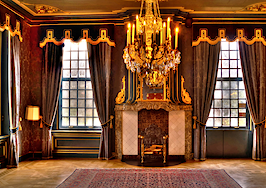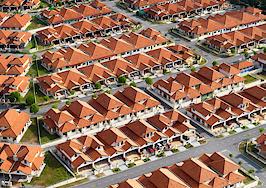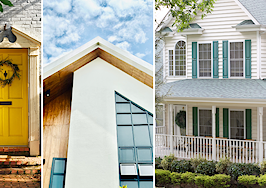Looking for more new agent advice? Sign up for The Basics, a weekly newsletter with everything you need to launch your real estate business.
American housing styles have changed, and continue to change, throughout the country and as homeowners’ tastes and lifestyles have evolved. As the country has undergone industrial and economic changes, both good and not so good, housing styles have adapted out of necessity.
In this new series, I will walk you through the predominant housing styles of the past 12 decades, beginning in 1900. A basic understanding of each architectural style that defines a decade will position you as a knowledgeable agent with your clients and make searching for a home with your buyers easier for everyone.
As the millennium approached, the need and desire for housing to be seen as “modern” and “contemporary” became more immediate.
More traditional styles, such as America’s love of the Colonial and Colonial Revival styles, are still in evidence in the 1990s. While classical elements such as columns and pediments graced these Colonial-style homes of the 1990s, they also included garages, driveways, decks, and patios, which were never seen in the original Colonial homes of the 1880s.
The condo
The ’90s saw the introduction of more multi-housing units, such as condominiums, built in a clean modern style, with traditional elements to add some exterior interest. Ranch-style homes and “ramblers” remained popular, built on a slab with no basement, or on split levels with partial basements.
Innovations during this time, still present in homes from the 1990s, are intercom systems, greenhouse windows, usually found in kitchens and loft-style high ceilings. Laundry rooms began to appear on the first floor, while they were previously found only in the basement. Electric garage door openers also became popular in this time period.
Movies at home
Interiors of 1990s homes featured built-in home entertainment systems and the home theater was soon the rage. Many home theaters were built with lavish features such as plush seating on different stepped levels, allowing clear views from every seat, large screens, bars and the ever-present popcorn machine.
Another popular feature of homes of this period was the waterbed. These beds could be very heavy, requiring more structural support to bear the weight. Leaks from waterbeds were common, making them forbidden in apartment buildings and condominiums.
Improvements
Insulation was used more effectively in 1990s homes, as were double-paned windows. Wood-burning stoves were gaining popularity as a heating alternative or to supplement central heating. Every woodstove had a kettle of water on top to add humidity to the interior. These stoves added to the feeling of “rustic elegance” that the 1990s made commonplace.
Natural wood tones, especially knotty pine, became a signature of the 1990s interior, especially in kitchens. There was a trend toward modern minimalism with a Zen or Shaker simplicity. This modernism also had elements of a Japanese influence. If you approach a house and it has a white crushed stone “Zen” garden near the entrance or abutting a back patio, chances are it dates back to the 1990s.
Wall-to-wall carpet, often over hardwood floors, was still widely used in the 1990s, as laminate flooring had yet to gain popularity. As an agent, if you are showing a house from this period and it has wall-to-wall carpet, be certain to request that the listing agent or owner lift a corner of the carpet to determine if hardwood flooring is under the carpet. Chances are, the hardwood floors are in excellent condition, having been covered with carpet for decades.
The layout
Open floorplans had yet to be widely accepted, but are in evidence in public areas of homes in the 1990s. Remember, many homes have been updated or modernized from their original construction. It is always wise to ask sellers when the renovations were completed and if the house has been appraised since. Track lighting was also widely used in the 1990s and may give a dated appearance to interiors.
Entryways and front doors were formal in the 1990s, with sidelights or narrow windows on each side of the front door. Once inside, a gracious foyer, often featuring a “statement” chandelier and staircase, was commonplace. Living rooms still included fireplaces and the formal dining room is very much in evidence, even if the family made use of it on only a few occasions during the year.
Residential architecture of the 1990s became more and more homogenized, with fewer distinctive features. Custom homes were commonly available and buyers could select their facade and floorplan from catalogs, making changes and additions as they wished.
If a home feels “too customized” or “too unique” it may present a problem for the seller, as its appeal may not be universal. The informed real estate agent, with a little knowledge and a trained eye, will have the ability to discuss options for updating and renovations with buyers.
Gerard Splendore is a licensed associate real estate broker with Warburg Realty in New York. Connect with him on LinkedIn.













